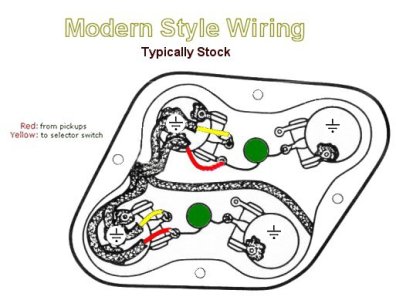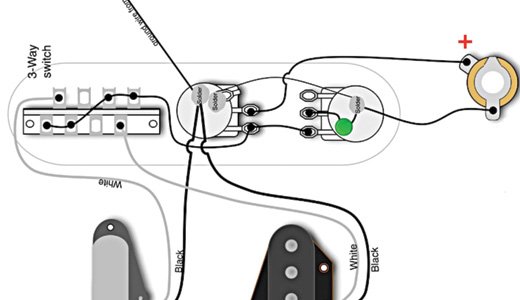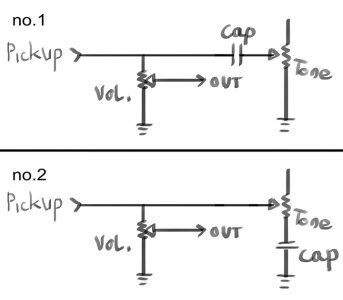psychepool
New member
There seem to be two main ways of wiring that using volume and tone.
First is the following common methods found in Gibson Les Paul.
It connects volume and tone pot with a tone cap.

Second, it is a common method used in Fender guitars.
The volume and tone pot are connected directly, and ton cap goes through tone pot and into the ground.

This is the circuit diagrams of two.

It just seems to be the difference between tone pot and cap location.
Is there a difference between the two wirings?
I usually prefer the second method because of its convenience in wiring.
If there is a difference between the two wires, please let me know the difference.
First is the following common methods found in Gibson Les Paul.
It connects volume and tone pot with a tone cap.

Second, it is a common method used in Fender guitars.
The volume and tone pot are connected directly, and ton cap goes through tone pot and into the ground.

This is the circuit diagrams of two.

It just seems to be the difference between tone pot and cap location.
Is there a difference between the two wirings?
I usually prefer the second method because of its convenience in wiring.
If there is a difference between the two wires, please let me know the difference.
